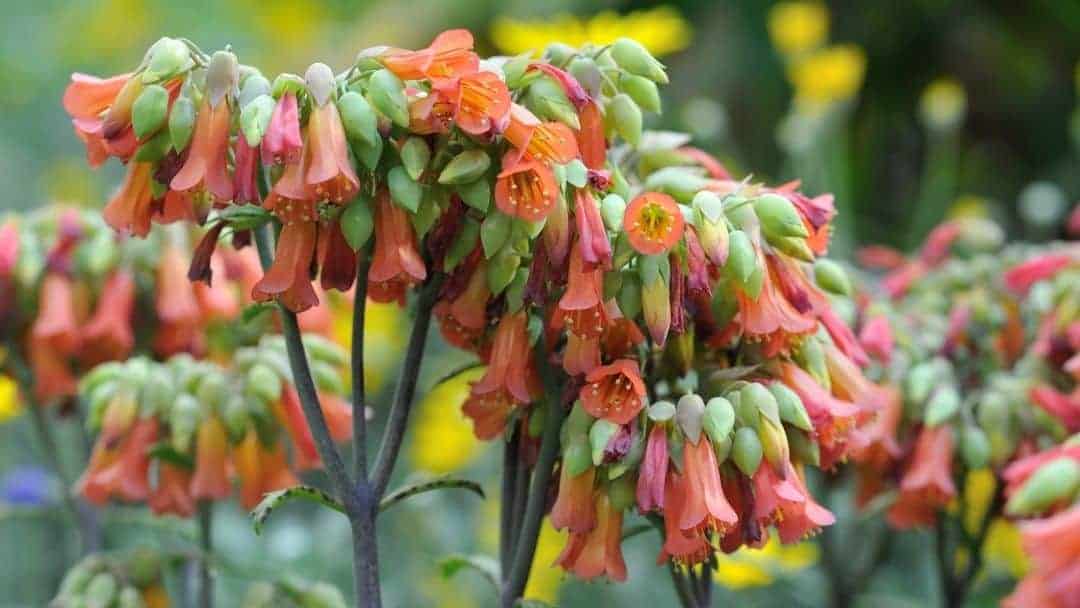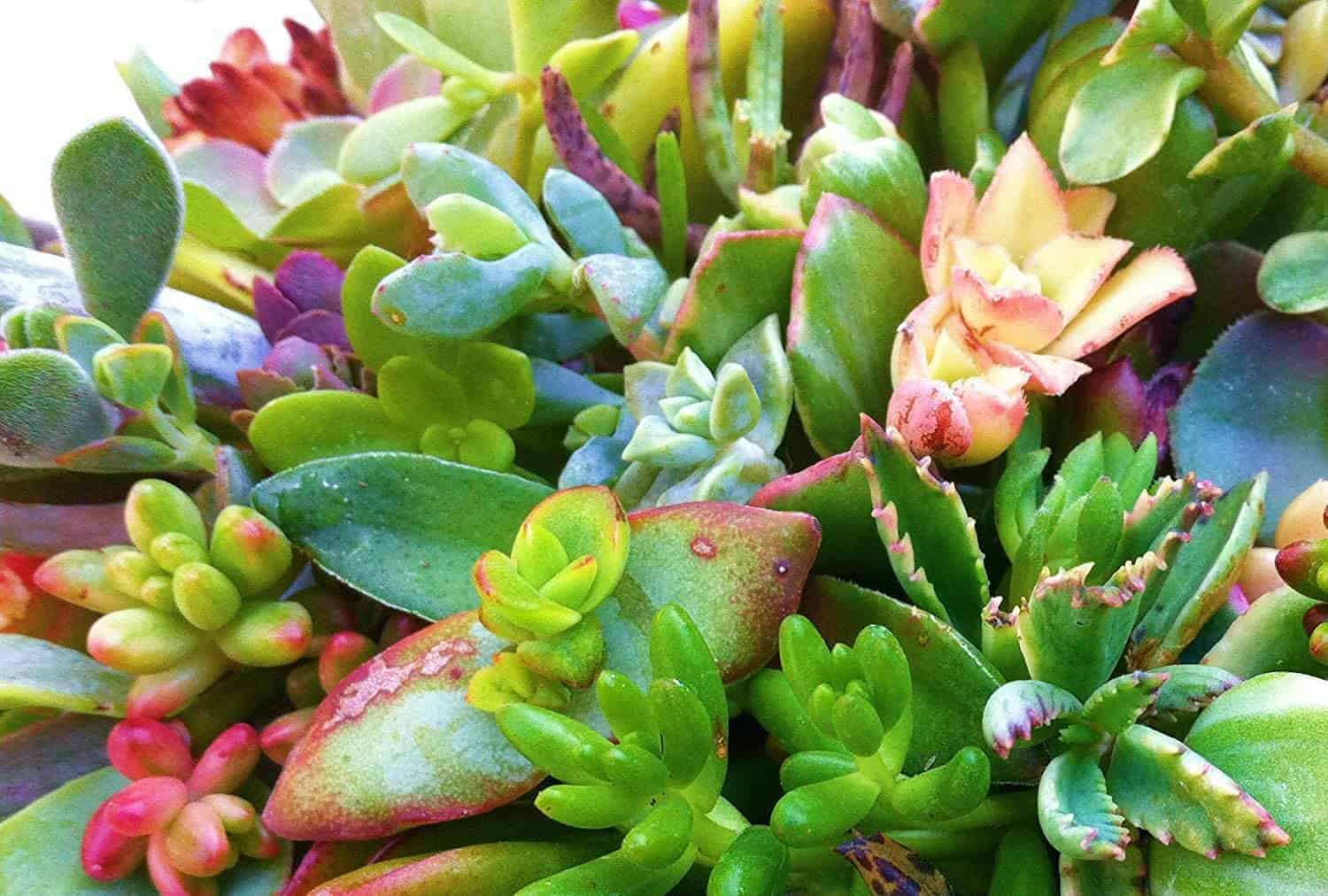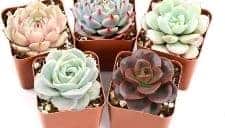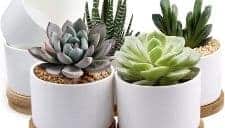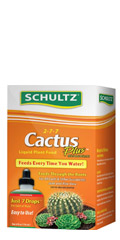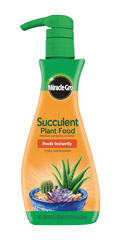Succulents are one of the most popular plants to grow. They’re easy, low maintenance and don’t require a lot of light. But did you know that succulents can also be grown from cuttings? These “succulent pups” are like baby succulents for those who want to start their own collection or add to it without waiting for seeds to sprout!
Table of Contents
- What are Succulent Pups?
- What to Do With Succulent Offshoots?
- How to Transplant Succulent Pups
- How Do You Remove an Offshoot From a Succulent Leaf?
- How to Propagate Succulent Pups After Transplanting?
- Water Propagation of Succulents – Is It Possible?
- Separating Succulent Pups – How to Separate Succulent Pups
- How Often Do You Water a New Succulent Pup?
- Should I Fertilize My Succulent Pups? If So, When?
- How Much Sunlight Does a Succulent Pup Need?
- Succulents That Make Good Pups
What are Succulent Pups?
This is just another way of saying a cutting or clone of the parent plant. It is interesting to note not all plants produce offshoots or pups, but those who do pretty much replicate themselves on their own thanks to cloning!

Not exactly what people mean when they say ‘succulent pup’ but this article would not be complete without our furry friend here!
Aloe Vera and some haworthia species are among the types of succulent plants that have this ability. They grow from the mature plant and produce other little plants on their own! You can identify succulent pups easily because they will usually appear as a clump of roots on an existing stem’s new growth, or they may look like tiny versions of the parent plant growing right next to the main trunk. When you see the tiny little plant growing on your succulent, there are few things to consider. Is it a pup? Or is this just normal growth for my succulent? Since each plant species if different, it’s probably best to look up images of the pups for your specific variety of succulent to make sure it’s indeed a pup you can propagate. For instance, the Pink Butterfly Kalanchoe is known to produce pups on existing leaves but other succulents produce pups in the soil near the base of the main plant. Once you confirm that it is in fact a pup, you’ll want to keep reading our care guide to learn how to propagate succulent pups successfully into new plants.
What to Do With Succulent Offshoots?
Succulent offshoots are often commonly referred to as pups as we’ve already discussed. While you may simply leave them alone, it’s definitely a good opportunity to create a new plant either for your garden or as a gift to a friend. They’re easily propagated by snipping off the pup from the mother plant, removing any damaged leaves or roots to prevent rot. Make sure it has at least two sets of leaves and that there are no flowers on the stem as succulents can only be propagated in this manner when they aren’t flowering.
How to Transplant Succulent Pups
So, planting succulent pups in a new container is the same process as planting any other succulent. Fill a pot with soil, place your offshoot on top of it and cover with more soil until only the leaf tips are poking out. Once you’ve trimmed your pups, make a small hole with your finger about an inch deep into loose soil mix combined with potting soil (or use a special cacti/succulent dirt mix) for baby plants like these little ones pictured here!
Then insert the cutting stem so that just a small piece is sticking out of the ground–the idea’s to have less work required for root growth and more stability given how delicate cuttings are.
How Do You Remove an Offshoot From a Succulent Leaf?
This is a delicate process where you have to be careful not to damage the mother plant. Use a sharp knife or scissors to cut off any leaves around the succulent pup, then gently remove it by pulling on one of its stems (similar to when you’re removing plants from soil).
How to Propagate Succulent Pups After Transplanting
Propagating succulent pups is easy. They need the right medium to grow, a sunny spot (though they can also be propagated indoors or on a balcony), and water 2-3 times per week. All you have to do is take a cutting or roots of a healthy plant – preferably with leaves already growing on it – and trim off any flowers that are present so as not to interfere with propagation efforts. Plant your cuttings in loose soil mixed with potting soil for baby plants like these little babies pictured here!
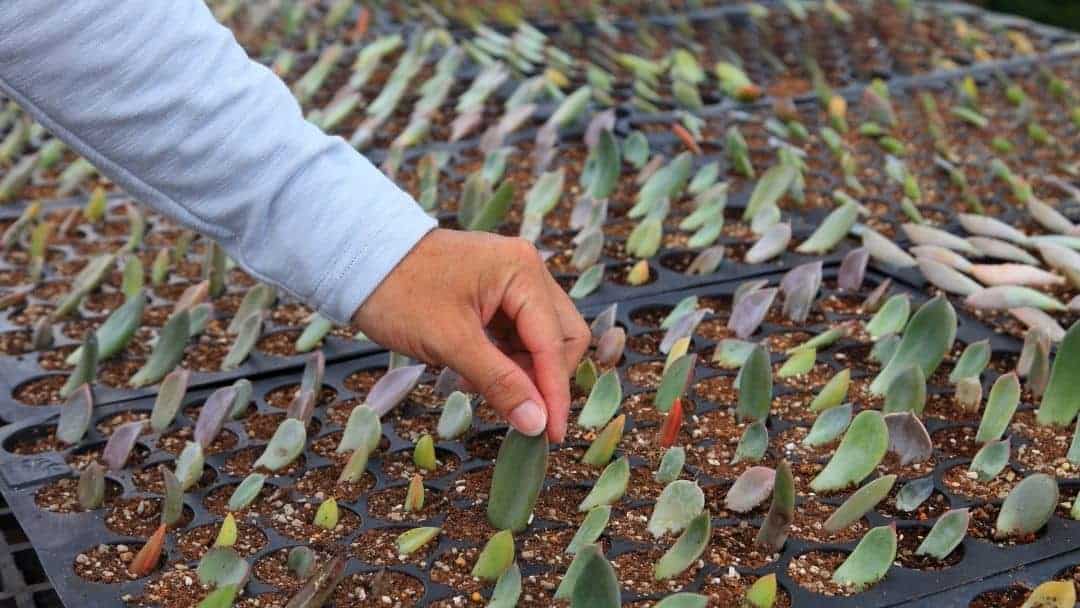
Then insert the cutting so that just a small piece is sticking out of the dirt – ideally less work will be required for root growth and more stability since these delicate cuttings are mostly under the soil where they can produce new root growth rapidly. Another possible option that’s becoming more popular lately is water propagation of succulents.
Water Propagation of Succulents – Is It Possible?
Many home gardeners are reporting success with this method, in spite of the common knowledge that succulents do not like excess water. However, this may actually not be the case so much as it is that they get exposed to bacteria, mold and mildew in damp soil that harms their roots. Water propagation has the added benefit of working a little bit faster and it does not seem to harm most succulent plants because there are none of the soil pathogens that can cause issues, assuming you use a clean water source that’s free of chlorine or other harsh chemicals.
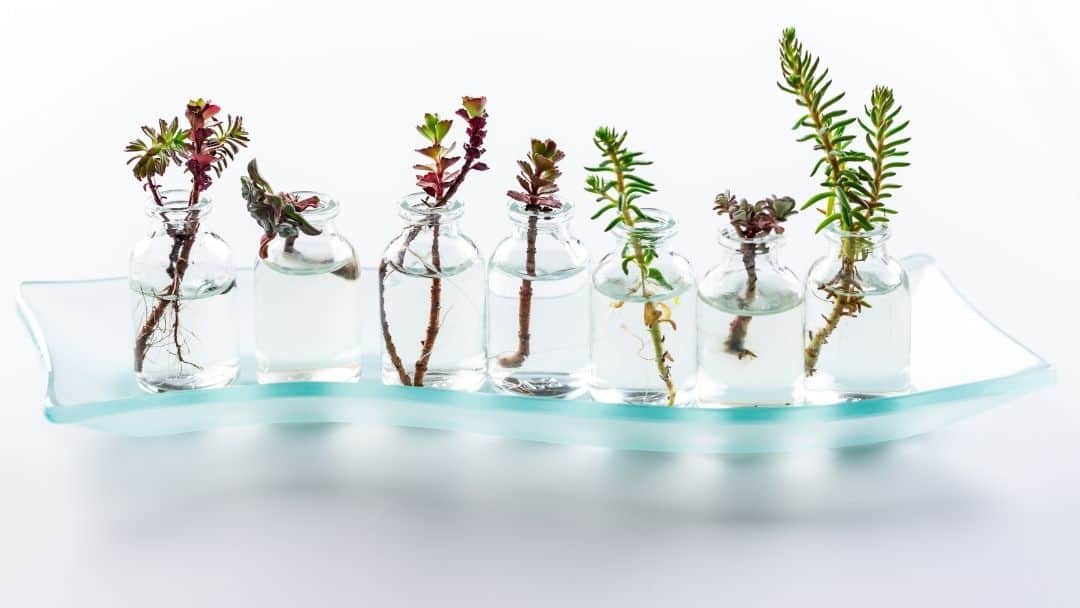
Separating Succulent Pups – How to Separate Succulent Pups
So, how do you separate a succulent puppy or offshoot that’s entangled with another one close by? The do tend to grow densely around the main plant, and this can present a challenge. You have to start by separating the roots. The roots are the part of a plant that take in water, nutrients and minerals from the soil. You can separate them by hand or use a spade to cut through their root ball – whatever’s easiest for you!
The next step is to gently separate any entangled leaves minimizing damage to either pup, then add new potting mix around each individual pup in a new container just like we described above. This will help keep it stable while rooting takes place on its own.
How Often Do You Water a Succulent Pup?
Once they’re planted, make sure your succulent pups get watered thoroughly once per week and misted every other morning so that their pots stay slightly damp but not when you check up on them in the afternoon. It’ll be worth it-these little guys grow really fast! Once they have a solid root system you can move on to watering them once per week. Eventually, you may need to stretch that time out a bit more. While each succulent has its own very specific watering needs, all of them require dry times between watering as that’s what they experience in their natural desert environments.
Should I Fertilize My Succulent Pups? If So, When?
That’s a great question now that we’ve covered watering requirements and yes, you should eventually fertilize your new plants. Wait about 4-6 weeks so that you don’t shock the young root system. In general, succulent plants do not require a lot of fertilizer as noted by the MSU Extension, but new plants may benefit from an added boost of nutrients as the establish themselves. Here’s a few options specifically formulated to fertilize succulent transplants:
How Much Sunlight Does a Succulent Pup Need?
Pups can be a great way to grow new succulents without having to wait for seeds to sprout, but it is important that you know how much sunlight your pup needs. Succulent pups need less light than their adult counterparts and may scorch with more than 6 hours in a given day.
Succulents That Make Good Pups (Top 3: Echeveria, Jade Plant, Aloe Vera)
Not all succulents produce offshoots, so it is important to know the types that are best for propagation. There are some succulents that are especially suited for this style of transplanting and frequently produce viable pups for transplanting. Here’s a list of the most common ones starting with the top 3 shown above.
- Aloe Vera
- Jade Plant
- Echeveria
- Faucaria
- Mother of Thousands
- Pink Mother of Thousands
- Mother of Millions
- Sedeveria
- Aeonium
- Crassula
- Haworthia
- Agave
- Hens and Chicks
- Living Stone Plant
- Graptosedum
- Air Plants
This article was brought to you by the writing team at Fertilizer for Less. For more info about us, click on the image below to view our website homepage.
There may be more succulents out there that produce offsets, so feel free to let us know of any succulent pups we missed in the comments below!
Today we’ve been talking about succulent pup propagation and how to take care of them. We hope this article has helped you learn more about the process, as well as a few tips for caring for your new little cuties! Did you enjoy our blog post? If so, please share it with your friends on social media or in person by telling them all the incredible things they can do with succulents (and their offshoots!) Stay tuned for future posts from us here at Fertilizer for Less where we will be covering topics like plant care, pest control, and lawn care.

